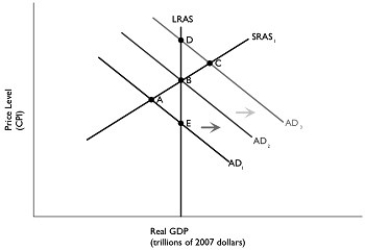Figure 12.1  Alt text for Figure 12.1: In figure 12.1, a graph comparing real GDP and price level.
Alt text for Figure 12.1: In figure 12.1, a graph comparing real GDP and price level.
Long description for Figure 12.1: The x-axis is labelled, real GDP (trillions of 2007 dollars) and the y-axis is labelled, price level (CPI) .5 lines are shown; AD1, AD2, AD3, LRAS, and SRAS1.Line AD1 begins in the top left corner and slopes down to the end of the x-axis.Line AD2 follows the same slope, but is plotted to the right.Similarly, line AD3 also has the same slope and is plotted to the right of AD2.Line SRAS1 begins close to the vertex and slopes up to the top right corner.Line LRAS is perpendicular to the x-axis, passing through points D, B, and E.Lines AD1 and SRAS1 intersect at point A.Lines AD2, LRAS, and SRAS1 intersect at point B.Lines AD3 and SRAS1 intersect at point C.Lines AD1 and LRAS intersect at point E.Lines AD3 and LRAS intersect at point D.The area between lines AD1 and AD2 is indicated by a right pointing arrow.The area between lines AD2 and AD3 is indicated by a right pointing arrow.
-Refer to Figure 12.1.Suppose the economy is in short-run equilibrium above potential GDP and automatic stabilizers move the economy back to long-run equilibrium.Using the static AD-AS model in the figure above, this would be depicted as a movement from
Definitions:
Total Product Cost
The complete cost of producing a product, including direct materials, direct labor, and both variable and fixed overhead.
Cost-Volume-Profit Analysis
An accounting technique used to determine how changes in costs and volume affect a company's operating income and net income.
Absorption Costing
A method of accounting that incorporates all costs associated with manufacturing, such as direct materials, direct labor, and both variable and fixed overhead, into a product's price.
Internal Management
The process and practice of effectively running an organisation by its own executives and staff, focusing on policies, strategies, and resource allocation.
Q12: A cash withdrawal reduces deposits, reserves, and
Q23: A one-time tax rebate, which is not
Q34: A central bank can help stop a
Q40: Which of the following is an example
Q96: Refer to Table 11.9.Suppose the table above
Q100: Refer to Figure 11.17.In the figure above,
Q215: A series of bank runs in a
Q220: Explain why expansionary monetary policy would not
Q235: If the federal government pursues an expansionary
Q264: Which of the following best explains the